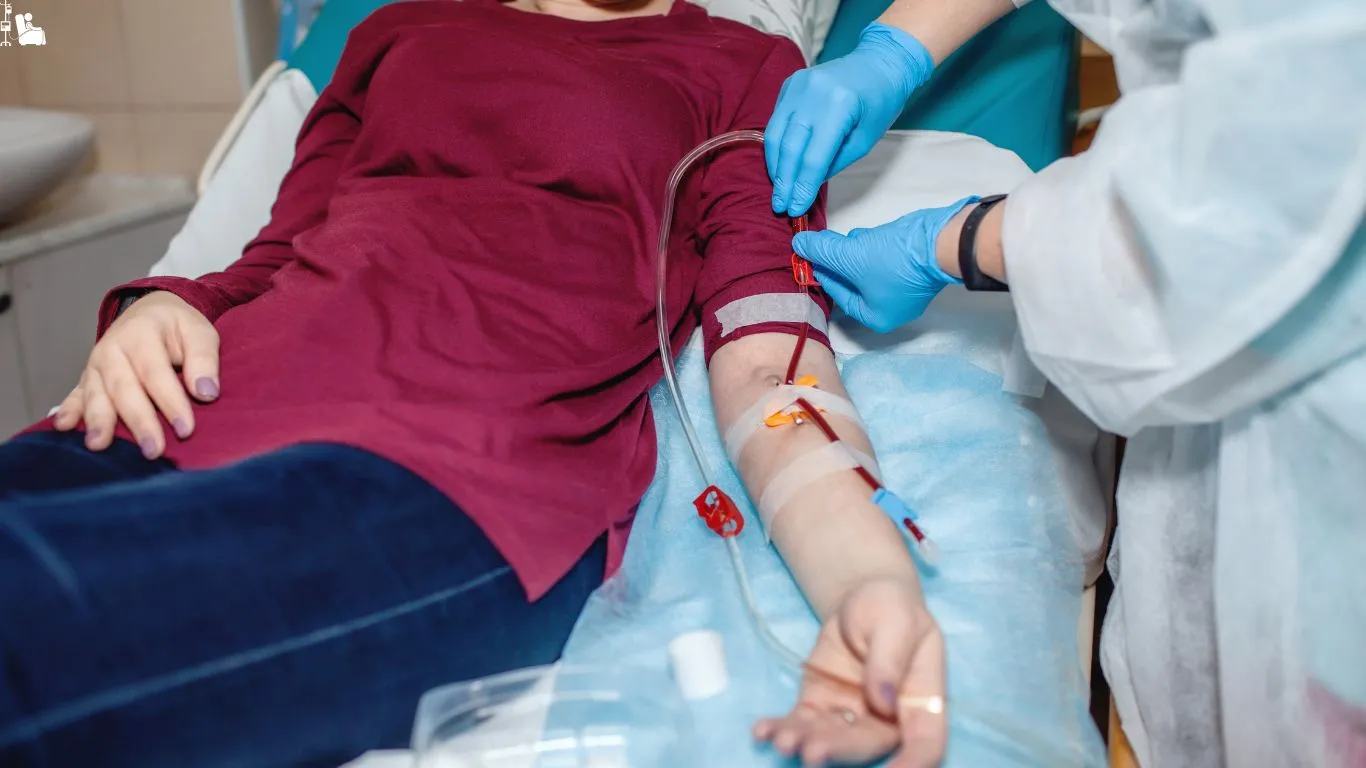
20 أغسطس Installation of a Kidney Dialysis Machine in the Arm
Many conditions require undergoing kidney dialysis, where the process involves connecting the body to a dialysis machine. This allows blood to flow through tubes to the machine for cleaning and filtering before returning it to the body. There are three methods to connect the body to a dialysis machine.
two of which involve installing the machine in the arm: arteriovenous fistula (AVF) and arteriovenous graft (AVG). The latter involves using a catheter. The doctor often places a dialysis catheter in the neck.. Dr. Amir Malkawi, a vascular surgery consultant, will explain in the following article the steps involved in installing a kidney dialysis machine in the arm, along with the preparatory and follow-up stages.
Preparing for the Installation of a Kidney Dialysis Machine in the Arm
There are several procedures to prepare for the installation of a kidney dialysis machine in the arm, including:
- Safeguarding the integrity of the blood vessels in the arms. If a kidney disease requiring dialysis is diagnosed, patients are advised to inform the medical team if blood samples need to be taken or intravenous medications administered. This precaution helps prevent damage to veins that could hinder the ability to install the dialysis machine in a damaged vein.
- Informing the doctor about all medications used to avoid complications after the procedure, such as blood thinners that may cause bleeding. The doctor may recommend discontinuing them for a specified period before and after the procedure.
- Arranging transportation home after the procedure, as the patient may not be able to drive for some time post-operation.
- Showering on the day of the procedure and avoiding applying creams or other products to the arms.
- Avoiding using a razor to shave the arms before the procedure. If hair removal is necessary, the medical team will handle it appropriately.
- Removing all jewelry and accessories from the arms before the procedure.
Read more: Peripheral Vascular Catheterization
Steps of Installing a Kidney Dialysis Machine in the Arm
The installation of an arteriovenous fistula or graft for kidney dialysis typically occurs several weeks or months before the first dialysis session to allow the body to acclimate and the area to heal adequately. Below are the detailed steps for installing an arteriovenous fistula (AVF) and arteriovenous graft (AVG):
- Evaluation of Blood Vessels: Initially. the doctor evaluates the blood vessels in the arm and accurately determines their locations using ultrasound imaging.
- Local Anesthesia: the Local Anesthesia used to numb the area where the procedure will be performed.
- Selection of Non-Dominant Arm: For instance, if the person writes and uses utensils with their right hand, the left hand will be selected for the installation of the kidney dialysis machine connection.
Arteriovenous Fistula (AVF) Procedure:
- Small Incision: A small incision is made in the arm.
- Selection and Preparation of Vein and Artery: An adjacent vein and artery are selected. A small hole is made in each, and then the artery is connected to the vein and sewn together.
- Integration and Healing: Within about 10 days after the procedure, the artery and vein integrate at the surgical opening, forming a connection between the artery and vein used for the kidney dialysis machine.
Arteriovenous Graft (AVG) Procedure:
A small plastic tube is placed to bridge between the artery and vein instead of directly opening the artery into the vein, similar to the remaining steps of the procedure.
Post-Installation of Kidney Dialysis Machine in the Arm
There are several instructions related to the recovery stage after the installation of an arteriovenous fistula or graft for a kidney dialysis machine in the arm, including the following:
- Elevate the arm on two pillows to reduce hand swelling after the procedure, which typically lasts for about two days.
- Maintain cleanliness and dryness of the surgical area.
- Avoid lifting heavy weights or engaging in strenuous activities.
- Immediately inform the doctor if any signs of infection appear in the area, such as redness around the connection site, warmth when touched, or fever.
- Numbness and tingling in the hand usually subside after several weeks post-procedure.
- Ensure adequate rest and good sleep to aid wound healing and recovery.
- Showering or washing the hand is usually permissible after two days of the procedure, preferably after consulting with the doctor about the appropriate timing.
- Return to normal activities can typically occur within a day to two days after the procedure.
References:
[1] – https://www.kidney.org/atoz/content/hemoaccess
[2] –https://myhealth.alberta.ca/Health/aftercareinformation/pages/conditions.aspx?hwid=ug4010
[3] – https://www.niddk.nih.gov/health-information/kidney-disease/kidney-failure/hemodialysis
[4] – https://surgery.ucsf.edu/conditions–procedures/vascular-access-for-hemodialysis.aspx
[6] – https://www.mountsinai.org/health-library/surgery/hemodialysis-access-procedures
[7] –https://myhealth.alberta.ca/Health/aftercareinformation/pages/conditions.aspx?hwid=ug4015
